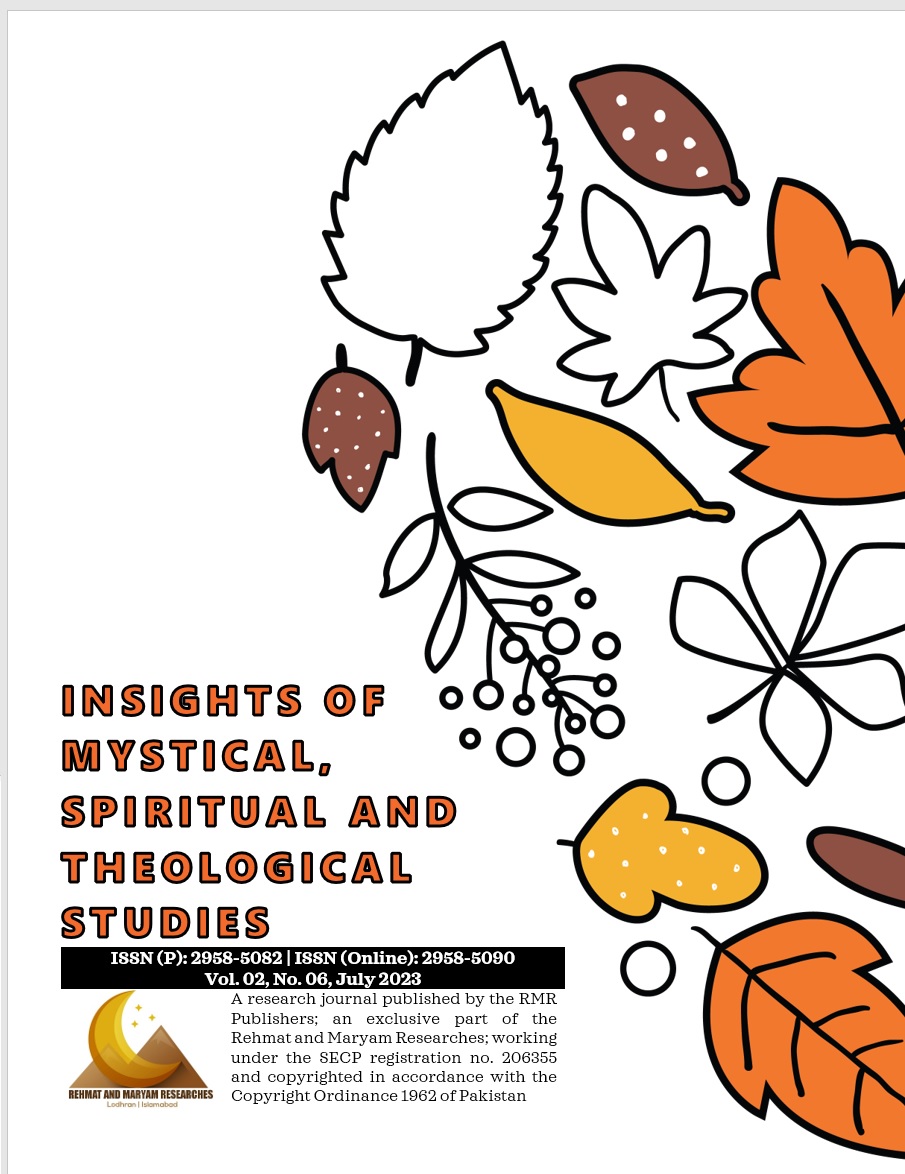Religious Differences versus Social Oneness: Analyzing Dr. Asim’s Concept for “Romanticizing Afghanistan, Iran and Pakistan”
Keywords:
Zikri Baloch People, Yarsani Community in Iran, Gilgit-Baltistan, Ismaili Sect of Shia Islam, John Hinkson, Citizen ParticipationAbstract
While analyzing the religious differences in Afghanistan, Iran and Pakistan, this study explores the significance of promoting social oneness in the context of these three states. This paper examines the religiosity and religious demographics of Afghanistan, Iran and Pakistan, highlighting the diverse religious groups present in each nation, aiming to address the following questions: Can the jointly administrative market between these three states facilitate social integration, solidarity, and a shared sense of belonging? Can it contribute to the development of positive relationships and equal opportunities for individuals from different backgrounds? How can engaged theory and structural functionalism be applied to promote social cohesion and stability in the region?
By investigating the Dr. Asim’s concept of social oneness, which emphasizes a shared vision, inclusive communities, equal opportunities and supportive relationships, this paper argues that the jointly administrative market has the potential to foster these principles. Despite historical conflicts and religious differences, this paper contends that engaging all social segments in the region can lead to a shared prosperous future. By analyzing engaged theory and structural functionalism, the study explores the possibility of achieving unity and cooperation among the Afghanis, Iranians and Pakistanis. It also examines the potential economic, political and strategic implications of such a market, envisioning social integration, interfaith harmony and collective culture. Moreover, this study acknowledges criticisms of the proposal as utopian and politically challenging, but it emphasizes the importance of engaging different social segments to overcome conflicts and social exclusion. By examining the demographic and religious diversity in the region, this paper suggests that a jointly administrative market could lead to socio-cultural unification, shared objectives and structural cohesion.
References
Asghar, D. G. (2023, June 27). Building Social Oneness: Exploring Unity, Cooperation, and Stability in Afghanistan, Iran, and Pakistan through a Theoretical Lens. Retrieved from Pak-Iran Intellectual Forum: https://pakiranintellectualsforum.wordpress.com/2023/06/27/building-social-oneness-exploring-unity-cooperation-and-stability-in-afghanistan-iran-and-pakistan-through-a-theoretical-lens/
Asim, D. M. (2023). Romanticizing Afghanistan, Iran and Pakistan. Islamabad and Qom: Rehmat and Maryam Researches.
Naqvi, T. (2023). Dempgraphy of Iran. Islamabad: Pak-Iran Intellectuals Forum (Islamabad Office).
Noor-ul-Ain, S. (2023). Economic Cooperation between Afghanistan, Iran and Pakistan. Islamabad: Pak-Iran Intellectuals Forum (Islamabad Office).
Nourani, J. D. (2023). Demography of Afghanistan. Qom: Pak-Iran Intellectuals Forum.
Saeed, T. (2023). Role of Economic Interdependence in Reducing Religious Extremism in the South Asia. Shaanxi: Department of Economics and Logistics, Shaanxi University.
Sheikh, A. H. (2023). Dempgraphics of Pakistan. Islamabad: Pak-Iran Intellectuals Forum (Islamabad Office).
Umm-e-Zahra, K. (2023, June 27). Promoting Social Cohesion and Stability in Afghanistan, Iran, and Pakistan: A Combined Approach of Engaged Theory and Structural Functionalism. Retrieved from Pak-Iran Intellectuals Forum: https://wordpress.com/post/pakiranintellectualsforum.wordpress.com/845
Downloads
Published
How to Cite
Issue
Section
Categories
License
Copyright (c) 2023 Insights of Mystical, Spiritual and Theological Studies

This work is licensed under a Creative Commons Attribution-NonCommercial-NoDerivatives 4.0 International License.

